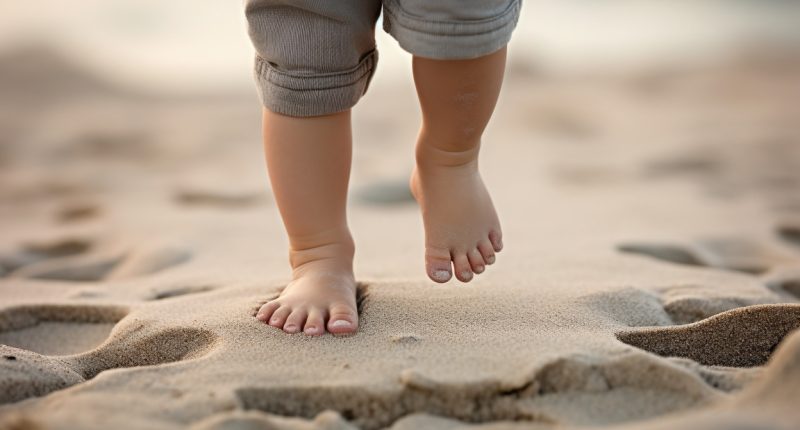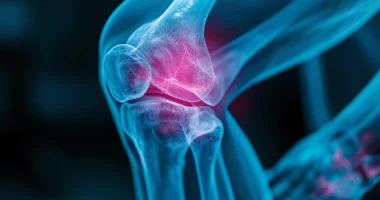Clubfoot
What’s that?
Clubfoot is an abnormality in the shape of the foot, as a result of which the hindfoot is elevated (equine external deviation), the forefoot is deviated inward (varus deviation), and the midfoot is in a state of adduction and elevation. Clubfoot is based on pathologic changes in the bony soft tissue component.
About the disease
Clubfoot, or equinovarus deformity of the foot, leads to disruption of the structure of this segment of the lower limb and biomechanical disorders. As a result, the foot can no longer typically perform the functions assigned to it, particularly support, pushing, springing, and proprioceptive. This pathology is more common in men. In half of the cases, the foot deformity is bilateral.
According to the classical description, a typical clubfoot curvature includes four essential components: hindfoot equinusand varus rotation of the midfoot with additional adduction and hollow foot formation at the expense of the forefoot. Diagnosis of clubfoot is based on clinical examination and X-ray findings.
How do we treat the pathology? Conservative or surgical correction methods can be used depending on the severity of the varus curvature in adults and children. In severe forms, it is not possible to cure without surgery; it allows you to radically get rid of the pathology, which is especially important for girls.
Types of clubfoot
From an etiologic point of view, two types of clubfoot are distinguished:
- Congenital – present in the child from birth;
- Acquired – develops with age.
A distinction is also made between typical and atypical clubfoot, unilateral and bilateral (right-sided combined with left-sided).
The Harrold & Walker classification is based on the ability to correct the deformity:
- If the foot is placed in a neutral or hypercorrected position, this is the first (mild) degree of deformity;
- If the equinus deviation is not corrected or a varus of 20° persists, this is the third degree;
- intermediate forms correspond to the second degree.
The Catterall system describes four types of clubfoot, depending on whether the pathological process involves a bone or soft tissue component (ligaments/tendons or contractures in the foot joints). These features of the disease are taken into account when designing the patient’s treatment program.
Symptoms of clubfoot
The symptoms of clubfoot are defined at rest and when walking.
When it comes to the pathologic structure of the foot in clubfoot, much attention is paid to the deformity of the talus bone. The forefoot and the stifle joint change draw attention when examining the foot. Normally, the angle between the axis of the head and neck of the talus is 15-20°, and in clubfoot, 80-90°; the inclination of the head about the sagittal plane normally is 25-30° and in clubfoot 45-65°. These signs of clubfoot in humans are tentatively determined visually. How to assess them accurately? With the help of radiography.
If clubfoot progresses, severe gait disorders develop over time, and pain occurs when walking. The pronounced curvature of the foot leads to a shortening of the leg, and the work of the muscular compartment of the foot deteriorates. An unfavorable consequence is the development of degenerative lesions of the joints of the foot.
Causes of clubfoot
The causes of clubfoot, present in children from birth, have not been definitively verified. In modern orthopedics, different hypotheses try to explain the formation of this anomaly:
- mechanical pressure on the fetus during the developmental stage in the uterus;
- dysembryogenetic disorders, resulting in a decrease in the length of the talus and/or pathologic turning of the talus, the calcaneus may also be altered;
- viral infections – especially dangerous pathogens like TORCH-complex in the first and second trimester of pregnancy (they can contribute to the development of pathologies of the musculoskeletal system);
- impaired blood flow in the region of the distal segment of the foot in the antenatal stage;
- defective bone development in the foot area;
- disorders in the structure of genes – genes of collagen types I-III, Hoxd13, and muscle protein Fh11 may be involved in the pathological process;
- environmental influence – exposure to harmful environmental factors (gas agents, medicines, tobacco, etc.).
The causes of acquired clubfoot are always known. The most common are post-traumatic deformity, post-polio curvature, clubfoot on the background of neurogenic lesions, on the background of connective tissue pathologies, and some hereditary diseases involving the musculoskeletal system.
Diagnosis and signs of clubfoot
Diagnosis is based on clinical examination and radiographic scanning. In some cases, computerized or magnetic resonance imaging is required. These studies allow us to detail the nature of the pathological process in the musculoskeletal system and determine the most rational option for surgical intervention.
Treatment of clubfoot
Clubfoot treatment aims to obtain anatomical and functional fullness of the foot. There are different approaches to the choice of treatment method for this deformity. Conservative management is required in some cases, while surgical treatment is needed in others.
Conservative treatment
Conservative clubfoot treatment has become widespread and is well-accepted by doctors and patients. In children, good results are achieved in 50-90% of cases; in adults, these figures are somewhat lower.
Conservative tactics can include the following approaches:
- Application of corrective cast bandages;
- Adhesive tape correction (applicable only in young children).
These techniques can be used as a stand-alone treatment for first-degree curvature or as preparation for surgery.
Bandages are applied in stages, with a one-week break in the first 6-8 weeks of treatment, then a two-week break. The orthopedist individually determines the number of bandages and depends on the effect and preservation of total local blood circulation.
Surgical treatment – surgery for clubfoot
The goal of surgical treatment is a one-stage and permanent correction of all elements involved in the foot deformity. The indications for surgery depend on the patient’s age, the degree of deformity, and stiffness of the foot.
Surgical manipulations fall into three categories:
- soft tissue surgeries;
- interventions on the bones of the foot;
- combined soft tissue and bone interventions.
Soft tissue surgeries, which are widely used, involve the release, lengthening, or transposition of tendons, ligaments, and joint capsules. Operations on bony structures are based on plastic correction.
All these types of surgeries are performed in more than 750 hospitals worldwide (https://doctor.global/results/diseases/clubfoot). For example, clubfoot surgical treatment is performed in 45 clinics across Germany for an approximate price of $7.5 K (https://doctor.global/results/europe/germany/all-cities/all-specializations/procedures/clubfoot-surgical-treatment).
Prevention
Prevention of acquired clubfoot in adults is aimed at timely treatment of musculoskeletal system diseases.
Rehabilitation for clubfoot
Rehabilitation for clubfoot includes therapeutic exercises, massage, and physiotherapy. Kinesio taping has also proved to be a favorable treatment.



